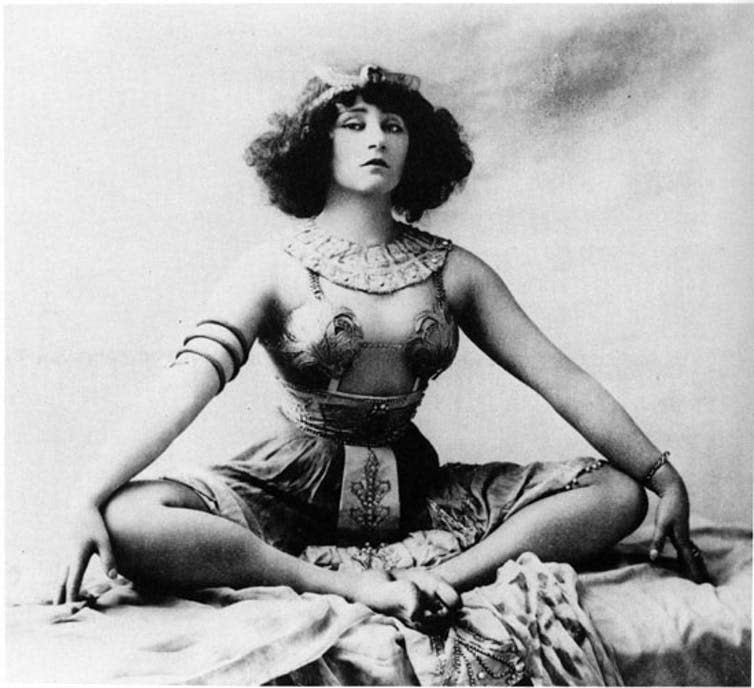Colette: writer, feminist, performer and #MeToo trail blazer

The French writer Colette was indifferent and even hostile to the feminist movement in the early 1900s. But both her writing and the way she lived her life represent a vibrant and radical feminism in tune with the #MeToo spirit of today.
Born in rural Burgundy in 1873, Sidonie Gabrielle Colette (the abbreviated pen name came later) belonged to a middle class but unorthodox family. Raised by a mother who was as sceptical of religion as she was of bourgeois respectability, she was 20 when she married Henri Gauthiers-Villars (“Willy”), the 33-year-old charming but dissolute writer son of a family friend.
The marriage was both a good and a bad move for Colette. Willy introduced her to the rich Bohemian culture of the Parisian demimonde, and launched her career by insisting (despite her reluctance) that she write down memories of her schooldays.
But his serial infidelities distressed and depressed her. And as an unscrupulous literary entrepreneur, Willy cheerfully sold his wife’s semi-autobiographical “Claudine” novels under his own name.
The stories of a spirited, tomboyish heroine rapidly became a publishing sensation, with profitable sales of related merchandise including Claudine cigarette holders. But the profits were all Willy’s.
When, in her early 30s, Colette decided to leave the marriage, she had to find a way to support herself. Energetic and resourceful, she began to publish under her own name and took classes in dance and mime. She trained in the gym and went on stage, becoming the only great French author (to my knowledge) to have alternated writing with dancing semi-nude on stages all over France.
She combined her careers, writing both fiction and non-fiction set behind the scenes of the music hall, giving a voice to the underpaid women performers who featured so often from a male perspective in paintings and novels of the time. She also began a passionate affair with a cross-dressing lesbian aristocrat, Missy, and scandalised the nation by sharing a passionate kiss with her on stage.

Director Wash Westmoreland’s recent film about Colette takes us to this point in her colourful career. She would go on to write prolifically as a journalist, novelist, essayist and innovator in the blended genre of “autofiction”.
She would nurse in World War I, marry twice more, bear a daughter at the age of 40, bolster her flagging finances by opening a beauty parlour – and finally become, for the French, “our great Colette”. But a whiff of scandal was still attached to her name, and acceptance of her as a great writer was slow.
The Catholic Church even refused to grant her a religious funeral (although she would have agreed with the Church, for religion formed no part of her passionate love of life.)
Sex and sensuality
Westmoreland’s film, starring the British actor Keira Knightley, shines a deserved spotlight on an important feminist figure. From the Claudine series on, Colette gives us a serenely irreverent perspective on a patriarchal culture.
She reverses the gaze of heterosexual desire to provide sensual, detailed descriptions of male bodies, and writes with equal sensuality and precision of same-sex desire. She writes movingly of romantic love and motherhood but insists, in her novel Break of Day that both are also peripheral to a woman’s life:
Once we’ve left them both behind, we find that all the rest is gay and varied, and that there is plenty of it.
In life, as in writing, she places female friendship centre-stage, sometimes subverting the eternal triangle by making its primary focus the relationship between a man’s wife and his mistress. She often published in women’s magazines, right up to her death in 1954 (Elle serialised her final books), and wrote comically and caustically of trying to make her own robust, food-loving body fit into the willowy fashions of the inter-war years.
In a very public life, as in her fiction, she exemplified financial and social independence and shame-free sexuality – what we would now call “gender fluidity”. She possessed a generous optimism that went against the grain of the angst and despondency which characterised so much male literature of the 20th century.
She remained, throughout, a popular writer. An author read for pleasure, for the sensuality of her prose, the dry note of humour that peppers her eloquence, the lightness of touch that means her seriousness is never heavy or self-important.
One of France’s greatest – and certainly most unconventional – writers, she has been translated – often brilliantly – into other languages. Her appearance on cinema screens should bring her even more readers.

Diana Holmes is the author of:
Middlebrow Matters: Women’s reading and the literary canon in France since the Belle Époque.
Liverpool University Press provides funding as a content partner of The Conversation UK
This article is republished from The Conversation under a Creative Commons license. Read the original article.

Diana Holmes is affiliated with the UK Labour Party (as a member). Diana Holmes received a LEVERHULME Fellowship grant in 1999-2000 to work on a book on the author Rachilde, and has received British Academy Small Grants for conferences /workshops on French literature, cinema, popular culture.

 Yahoo News
Yahoo News 